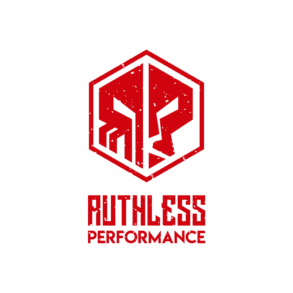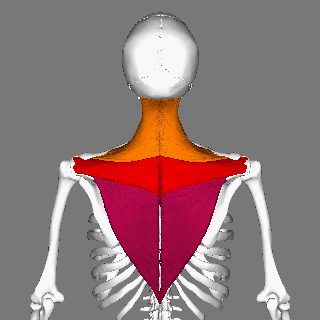I need to do a great deal of clarification when I tell a prospective client that we place such a heavy emphasis on the trapezius–in addition to the glutes. In short, the glutes are an underdeveloped, yet critical muscle for control of the femur (and therefore the leg), while the “traps” are an often underdeveloped, yet critical muscle for control of the humerus (and therefore the arm).
BUT what most individuals think about when they think trapezius is actually just a singular innervated component of the broader trapezius musculature.
Most conceptualize the traps as being simply the uppermost component of the traps rather than its entirety. The upper or “Superior” segment of the traps is what we most commonly think of as being the traps. This is the segment which elevates the scapula in something like a shrug or maintaining the neural shoulder position in something like a farmer’s carry. But this is often overdeveloped in athletes, particularly when compared against the remaining two components of the trapezius–the middle and inferior fibers.
The middle trapezius retracts the scapulae (bringing the shoulder blades closer together), like you would experience in a properly executed horizontal row, chest-supported row, or inverted row.
The inferior segment of the trapezius actually depresses the scapulae (dropping the shoulder blades towards your back pocket). This action is actually part of exercises like an overhead press, front plate raise, or even many of the variations of the face pull. Though categorized as the same muscle which elevates the scapulae (via the superior fibers), this scapular depression is actually the opposite movement, meaning that the trapezius does two seemingly opposite actions.
So, when we say that training the trapezius is one of the most important goals of our training, regardless of an individual’s goals, we tend to be referring to exercises and actions which stimulate these two often neglected components of the trapezius.
Whether its a warm up or main exercise we try to have our athletes stimulate the middle and inferior segments of the trapezius on an almost daily basis.
Consider adding face pulls, overhead work, band pull aparts, pendlay rows, inverted rows, and ring rows into your training to maximize the development of your trapezius which will, in turn, maximize the health, function, and performance of your shoulder.
Have your own training program but curious about a second opinion? We perform training audits to give you a professional review of your existing training program. Or, if you’re interested in learning more about how we train or even training with us, send us a message.


